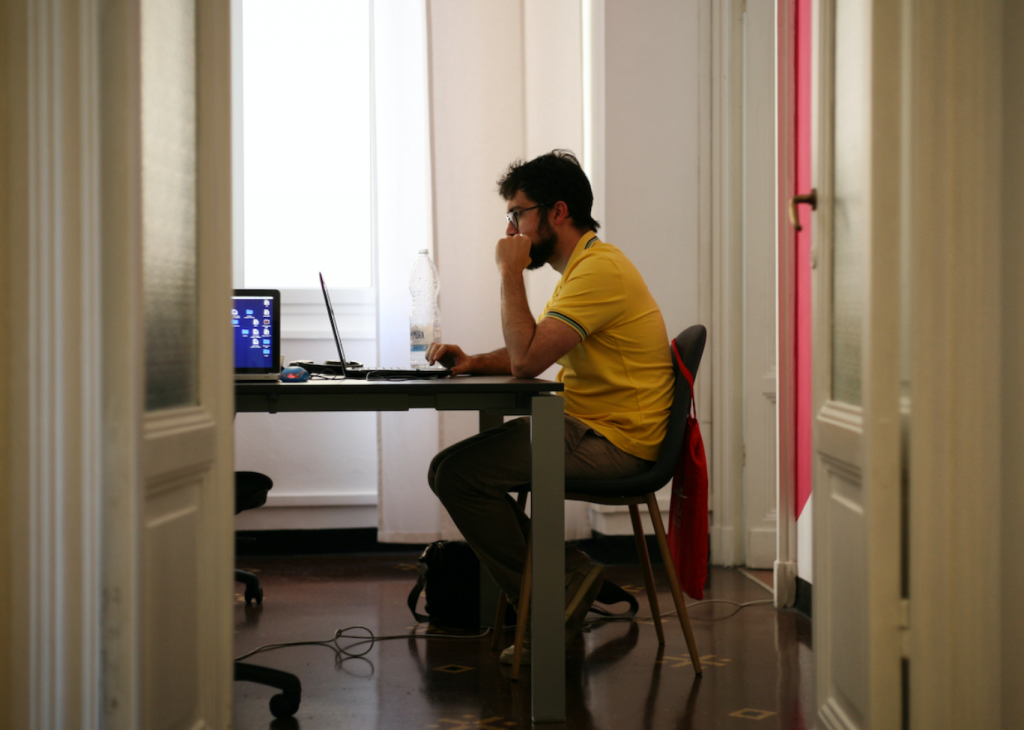*Editor’s Note: The “Views from NAU” blog series highlights the thoughts of different people affiliated with NAU, including faculty members sharing opinions or research in their areas of expertise. The views expressed reflect the authors’ own personal perspectives.
By Dr. Stephanie Garrison
Assistant Clinical Professor, PT Program
Most Americans sit for prolonged periods of time to complete their work. Then we go home or move from one room to another if working remotely and sit to relax. Even if you make time to work out, walk, jog or hike, how long you sit during the day can negate the benefits of exercise.
Many have experienced the negative side effects of sitting too long, including weight gain, sore back and neck, stiff legs or tightness in the hips. Sustained sitting also is linked to other health problems, including diabetes, heart disease, generalized muscle weakness, varicose veins, cancer and deep vein thrombosis (DVT). Our cardiovascular system suffers from lack of stimulation, which may increase a person’s risk for heart attack and stroke. The possibility of depression and anxiety may also be compounded while sitting for long periods of time. Due to the 90-degree angle most office chairs place our hips in, our hips stop moving within a full range of motion. Our nation has a high prevalence for total hip replacements due to stiffness and osteoarthritis that occur over time.
Your risk for developing physical and emotional issues increases if you sit for 4-8 hours per day. This escalates drastically if you sit for 8-11+ hours throughout a single day, regardless of if you engage in the recommended 30 minutes of exercise per day.
If you are computer-bound due to work or school duties, you can make small changes that may have profound effects in the long run. The first phase in varying your practices is to become self-aware of the current habits. The next steps are gradual implementation of that change, until finally you are in the maintenance phase, where the change is now permanent and the “new” habit. It is never too late to change a habit in the favor of your personal health. Our bodies are made to move and the more you move, the easier it gets.
Try to choose as many activities that you can from the list to alter your sitting patterns during the day.
- Park farther away from the office, classroom or grocery store, and walk.
- Stand to take phone calls, even if you are just moving around in a small space.
- Take your meetings for a walk—gather colleagues or students and move while you talk.
- Set a timer on your computer or phone every 45 minutes to get up and refill your water, speak to your coworkers or get five minutes of sunshine.
- Instead of sending emails, walk down the hall or up/downstairs to discuss items with your colleagues.
- Stretch out your hips and lower back throughout the day to avoid stiffness and tightness in the surrounding joints and ligaments.
- Walk or cycle to work to limit your environmental footprint.
If there are aches and pains that prohibit you from becoming more active, consider speaking to a physical therapist who can evaluate and provide exercises and stretches to combat the issue. NAU’s DPT program offers pro bono clinic services in the fall and spring semesters that are run by students and overseen by licensed physical therapists.
Becoming more active during the day also may spark your creativity and provide you with a new, and possibly outdoor, perspective. Trust the process and know that the small efforts can have the largest impacts. Share with coworkers what works and what doesn’t, so that you have someone in your corner to keep you accountable. Keep including others around you—physical and mental health is extremely important for all of us to remember and it helps to have a team around you for support!



